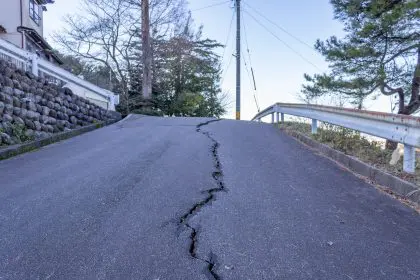This summer, consumers across America are preparing for significantly higher air conditioning expenses as multiple factors converge to drive costs upward. A combination of ongoing trade tensions, critical refrigerant shortages, and escalating utility rates is creating financial strain for households attempting to stay cool during increasingly extreme temperatures.
The situation appears particularly challenging for lower and middle-income families, who may struggle to afford necessary cooling while facing the highest utility arrears in four years. Industry experts warn that this perfect storm of factors could make this summer especially difficult for millions of Americans.
Trade policies trigger 80% increase in HVAC expenses
HVAC contractors nationwide report substantial cost increases directly linked to evolving trade policies under the Trump administration. Charlotte Comfort Systems owner Scott Shelton from North Carolina notes that his business expenses have surged by 80% since the pandemic began, driven by rising costs across labor, raw materials, and compliance with new refrigerant regulations.
These increasing expenses inevitably transfer to consumers. Components that cost $1,000 in March are projected to reach $1,300-$1,400 by September, representing a dramatic 30-40% increase in just six months. Denver-based UniColorado Heating and Cooling manager Aydin Mehr confirms similar challenges, with the industry struggling to maintain reasonable pricing amid persistent supply chain disruptions.
The immediate financial impact on homeowners needing new systems or repairs appears unavoidable, with contractors reporting they can no longer absorb the mounting costs. This creates particularly difficult circumstances for households facing emergency replacements during peak summer temperatures.
Utility bills reach highest level in over a decade
Beyond equipment and repair costs, operational expenses for air conditioning have also climbed substantially. The National Energy Assistance Directors Association (NEADA) projects average residential electricity costs will reach $784 this summer, marking a 6.2% increase from last year and the highest level recorded in more than ten years.
With extreme heat already affecting large regions including Texas and Oklahoma, many households face difficult decisions about cooling their homes while managing limited budgets. The combination of higher equipment costs and increased electricity rates creates a dual financial burden during the season when cooling is most essential.
NEADA reports that households facing utility payment difficulties now collectively owe approximately $21 billion in arrears, reaching the highest total in four years. This mounting debt indicates many families were already struggling with energy costs before this summer’s additional increases.
Critical supply factors driving price increases
Industry professionals identify three key supply chain issues contributing to unprecedented price increases. A severe shortage of R-454B, the eco-friendly refrigerant mandated by regulators, expected to persist until mid-June or early July. Manufacturers like Honeywell implementing refrigerant surcharges due to increasing raw material costs and exceptionally high seasonal demand. Many HVAC suppliers halting new orders amid tariff uncertainty, resulting in depleted inventory levels nationwide.
These supply constraints have prompted contractors to stockpile materials whenever possible in attempts to shield customers from the full impact of price increases. However, industry experts acknowledge this strategy provides only temporary protection against the broader market forces driving costs higher.
Manufacturing shifts amid tariff concerns
The ongoing trade tensions have prompted some major air conditioner manufacturers to reconsider their production strategies. Carrier recently announced a substantial $1 billion investment to expand its manufacturing presence within the United States, potentially reducing future dependency on imported components.
Despite these domestic investments, the industry remains heavily reliant on international suppliers. Mexico and China continue to represent significant sources for U.S. air conditioning imports, making the sector particularly vulnerable to tariff fluctuations and international trade policies.
Industry analysts suggest the HVAC sector maintains relatively strong positioning to weather tariff impacts compared to other industries. However, persistent uncertainty surrounding future trade policies continues generating significant concern among contractors, suppliers, and ultimately consumers facing higher prices.
Health implications amid reduced assistance
As temperatures climb to extreme levels, health professionals warn about increased risks of heat-related illnesses, particularly among vulnerable populations such as elderly individuals, children, and those with preexisting health conditions. Adequate cooling represents an essential health protection during intense summer heat.
Unfortunately, federal support programs designed to help struggling households maintain safe indoor temperatures face potential cutbacks. The Low Income Home Energy Assistance Program (LIHEAP), which provides crucial cooling assistance to vulnerable families, confronts funding challenges precisely when need appears greatest.
NEADA Executive Director Mark Wolfe emphasizes that without access to affordable cooling options, many Americans face genuine health risks including heat stroke and other serious conditions associated with excessive temperatures. This situation highlights the urgency of developing affordable cooling solutions and maintaining support programs that protect families during dangerous heat waves.
For consumers facing this challenging landscape, experts recommend exploring energy efficiency upgrades that might offset rising operational costs, investigating payment assistance programs through local utilities, and performing preventative maintenance to extend the lifespan of existing cooling systems. While these strategies cannot eliminate the financial pressure entirely, they may help households navigate the most expensive cooling season in recent memory.















